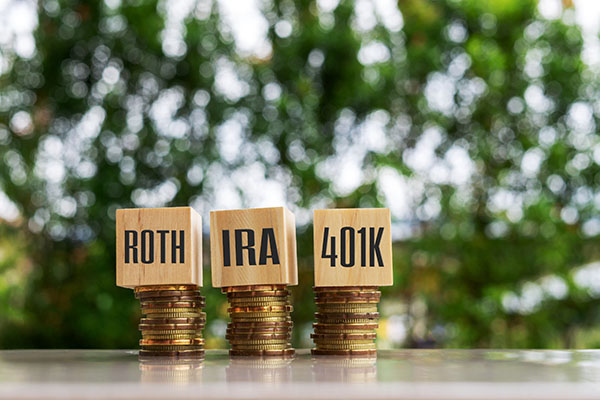
Many have heard the quote often attributed to Benjamin Franklin, “In this world nothing can be said to be certain, except death and taxes.” The sentiment behind this quote remains as relevant today as it did then, particularly in the context of modern retirement planning and tax-qualified retirement accounts. According to the Social Security Administration, tax-qualified retirement accounts are the predominant retirement plan among workers in the early 21st century. Common examples of tax-qualified retirement accounts include Individual Retirement Accounts (IRAs), 401(k) Plans, 403(b) Plans, etc. The prevalence and value of these accounts have risen dramatically in the past 20 years.
Given this increased wealth accumulation, tax-qualified retirement accounts are beginning to play a larger role in estate planning. For many, a trust often serves as the cornerstone of their estate plan. Trusts offer many advantages including the ability to avoid probate while still (i) managing assets for the benefit of young beneficiaries, (ii) protecting inherited assets from a beneficiary’s creditors or ex-spouse, or (iii) preserving a beneficiary’s eligibility for important public benefits. Given these advantages, it is often desirable to name a trust as the beneficiary of a tax-qualified retirement account. However, it is important to understand that these accounts remain subject to a complex set of income tax regulations that can often pose a trap for the unwary, particularly in the context of trust planning.
The major attraction of a tax-qualified retirement account is the ability to accumulate funds inside the account on a tax-deferred basis (or tax-free, in the case of a “Roth” account). However, IRS regulations dictate when this tax-sheltered accumulation must end. At a certain point, the account owner and/or beneficiary must begin to withdraw required minimum distributions (“RMDs”) from the account and pay income tax on the funds that are withdrawn. Generally, the best income tax planning strategy with respect to RMDs is to withdraw them over the longest period of time possible. This offers the advantage of delaying the income tax associated with the withdrawals and allows the funds to grow within the account on a tax-deferred basis as long as possible. This income tax deferral can have a significant investment and long-term savings impact on the account in question.
When an account owner dies and has named an individual directly as the beneficiary of his or her tax-qualified retirement account, the beneficiary can often easily establish an inherited account that allows him or her to withdraw RMDs over the course of his or her remaining life expectancy. This is usually the longest distribution period permitted under IRS regulation. A spousal beneficiary will also have the option of rolling the account over directly into his or her name.
However, when a trust is named as beneficiary, the trust document itself plays a crucial role in determining how quickly RMDs must be withdrawn from the account. If a trust meets specific requirements and is considered a “see-through trust,” the life expectancy of the oldest trust beneficiary may be used as the measuring life for determining how quickly RMDs must be withdrawn from the account. Otherwise, if such requirements are not met, the funds must be completely withdrawn from the account over either the remaining life expectancy of the account holder or within a five year period, depending upon the age of the account owner at the time of his or her death. This often accelerates the timeline for withdrawing the funds from the account, as well as the associated income tax.
For a trust to be considered a “see-through trust,” it must meet the following requirements:
- Valid. The trust must be valid under state law.
- Irrevocable. The trust must either become irrevocable upon the death of the owner or be irrevocable on the date that it is signed.
- Identifiable. The beneficiaries of the trust must be identifiable from the trust instrument. This is required so that the oldest trust beneficiary can be identified to determine how quickly RMDs must be withdrawn from the account.
- Documentation. Certain documentation must be provided to the plan administrator. This may often be satisfied by supplying a copy of the trust document.
- Individuals. All beneficiaries of the trust must be individuals. Estates, charities, non-qualified trusts and other entities do not qualify as individual beneficiaries.
While some of the above requirements are fairly straight forward, it remains easy to run afoul with others in the average trust document. For example, the simple act of including a charity as a contingent beneficiary may prevent a trust from being considered a see-through trust. Accordingly, if you plan on naming a trust as the beneficiary of a tax-qualified retirement account, you should speak with your attorney to make sure your trust qualifies as a see-through trust. In some estate plans, it might even make sense to create a standalone see-through trust depending on the size of the tax-qualified retirement accounts and the account owner’s estate planning goals and family situation.
